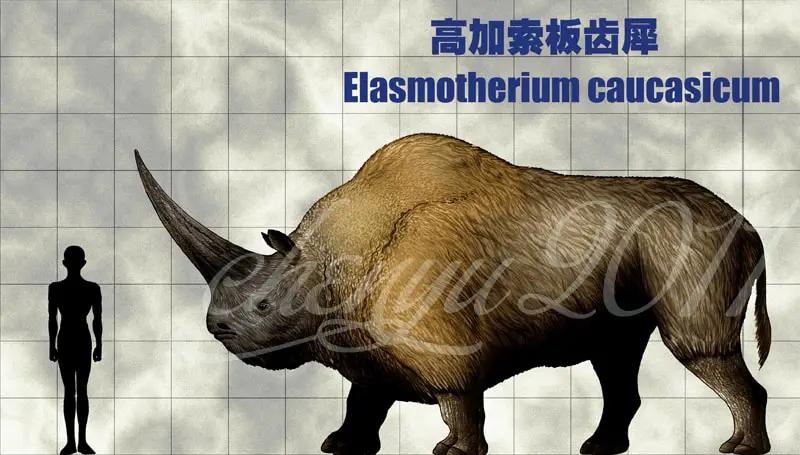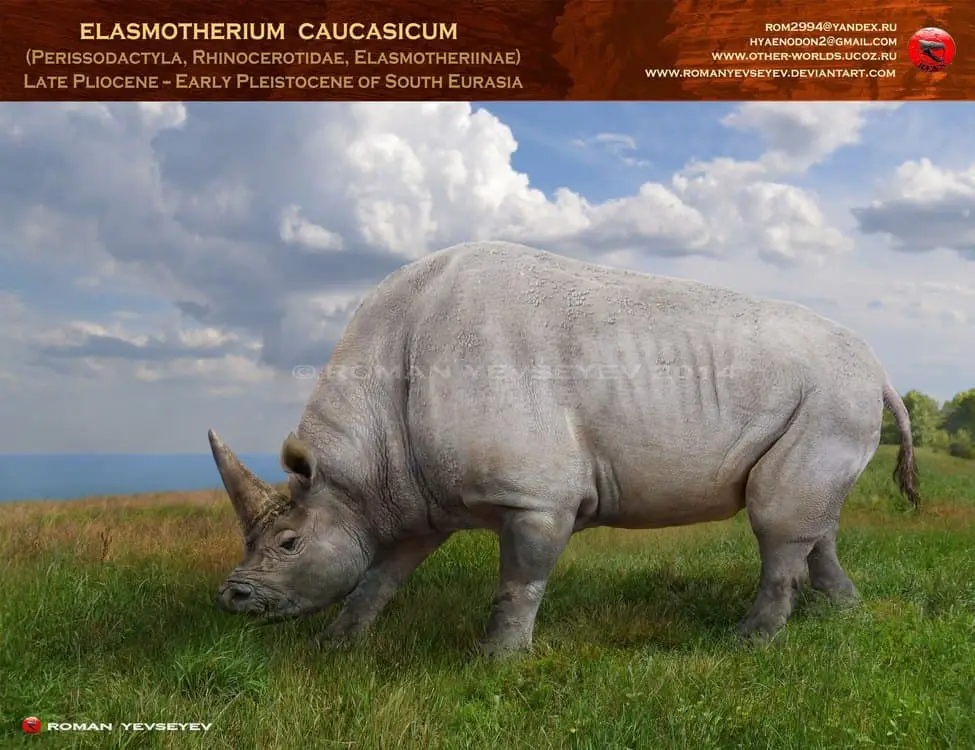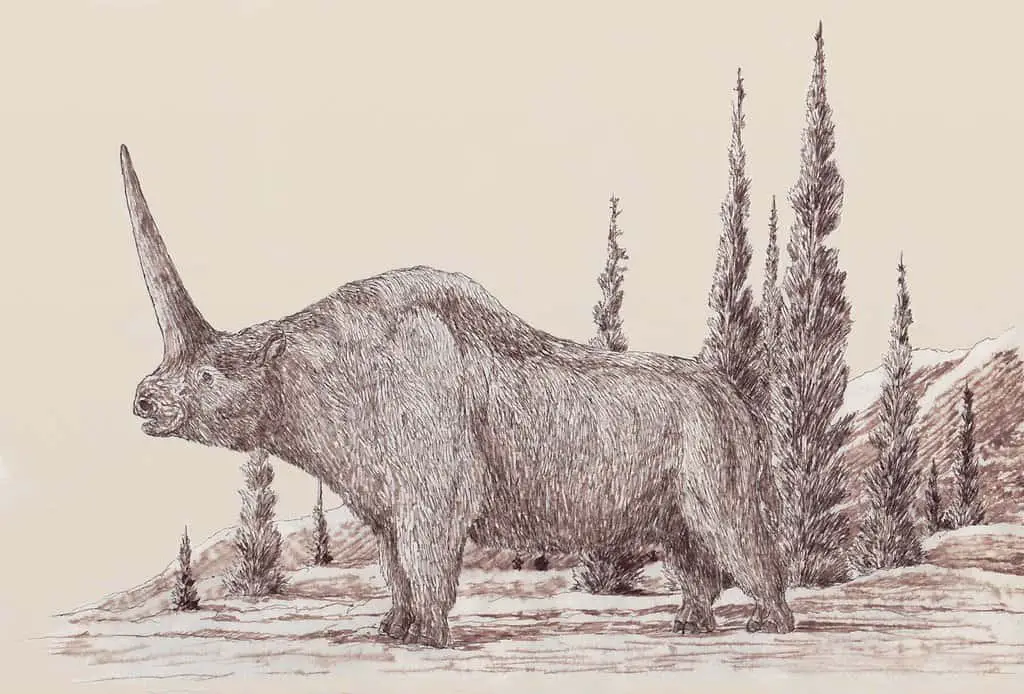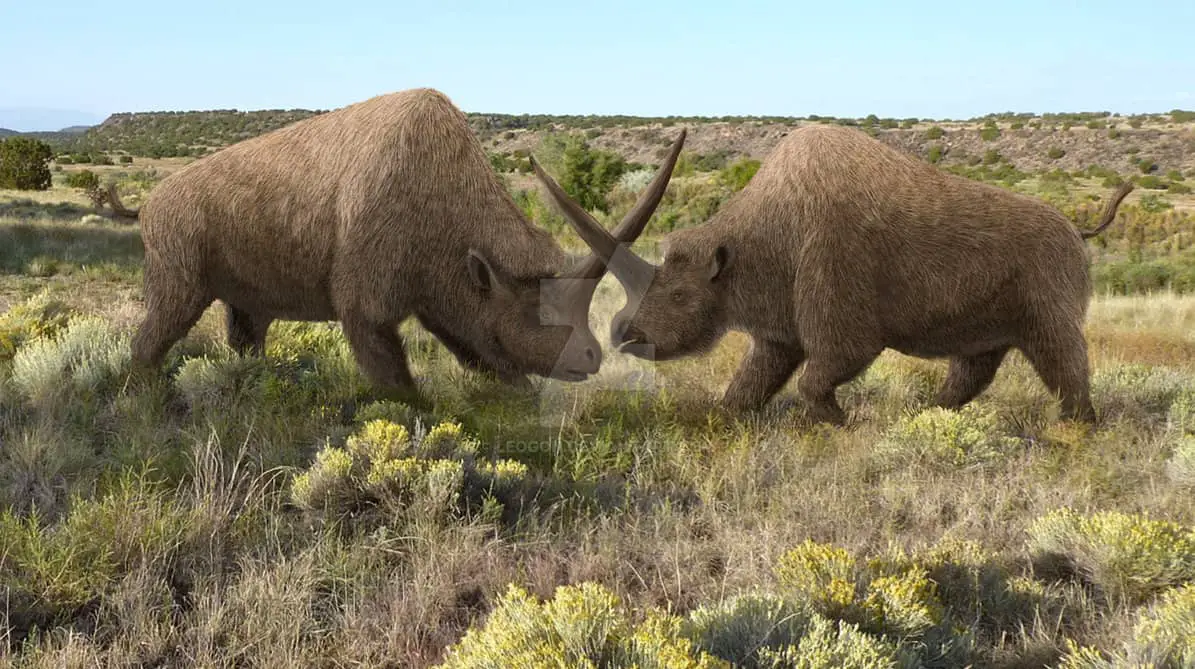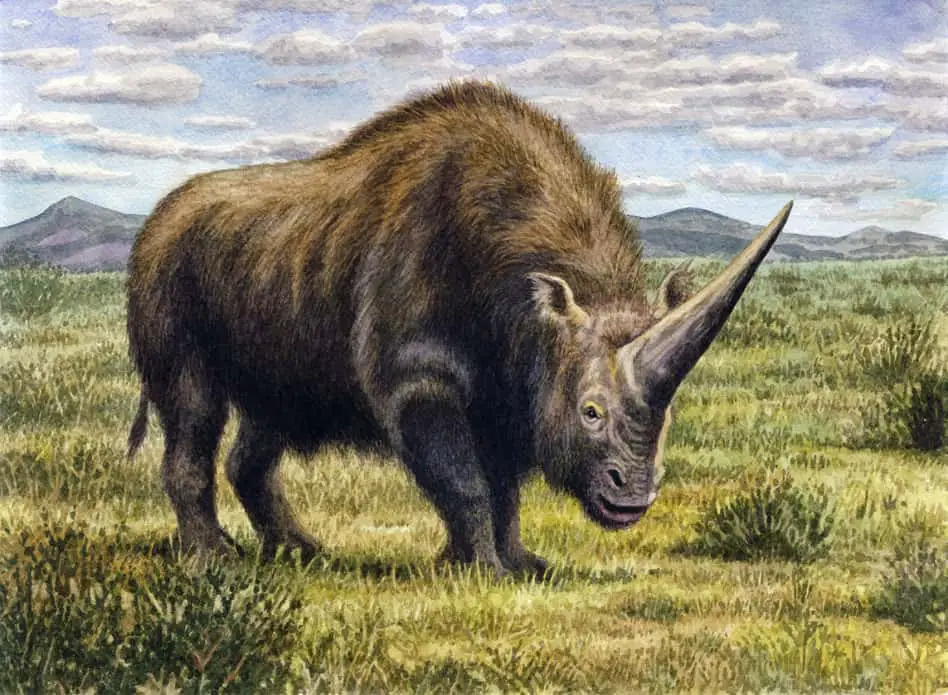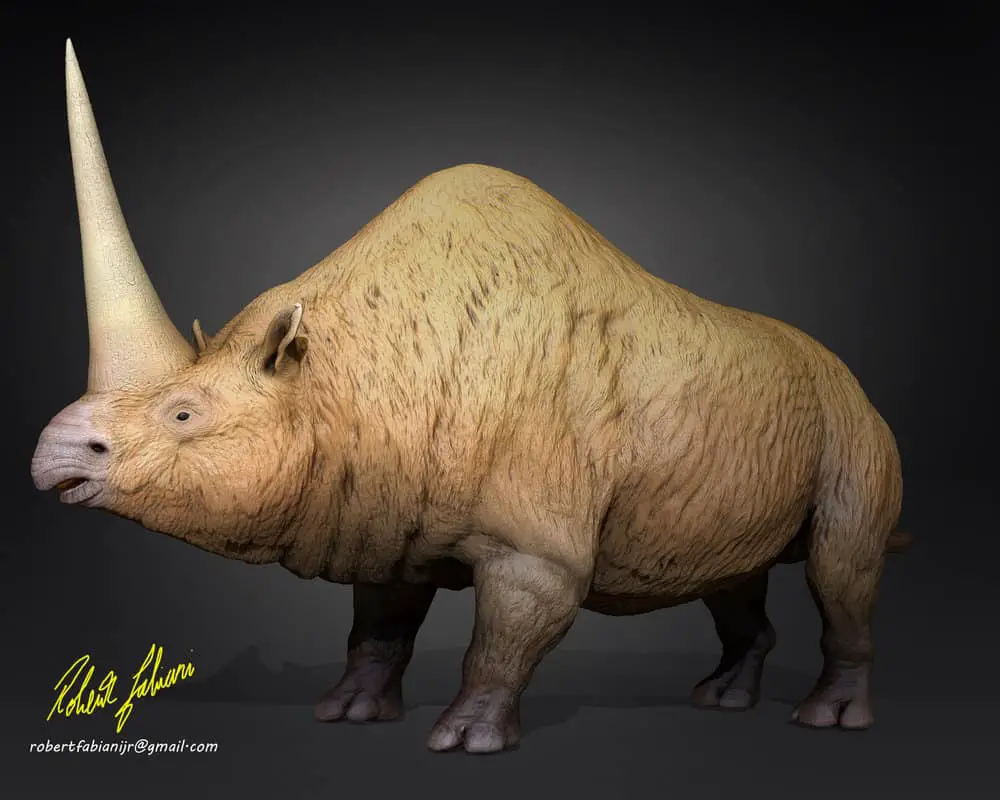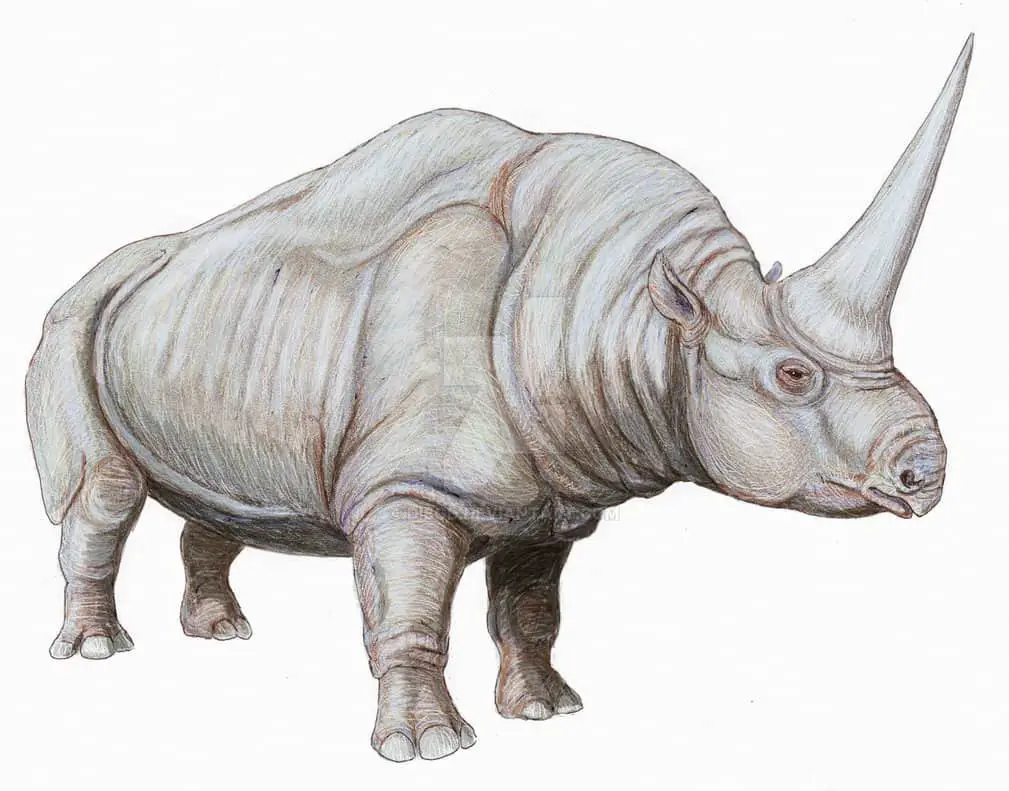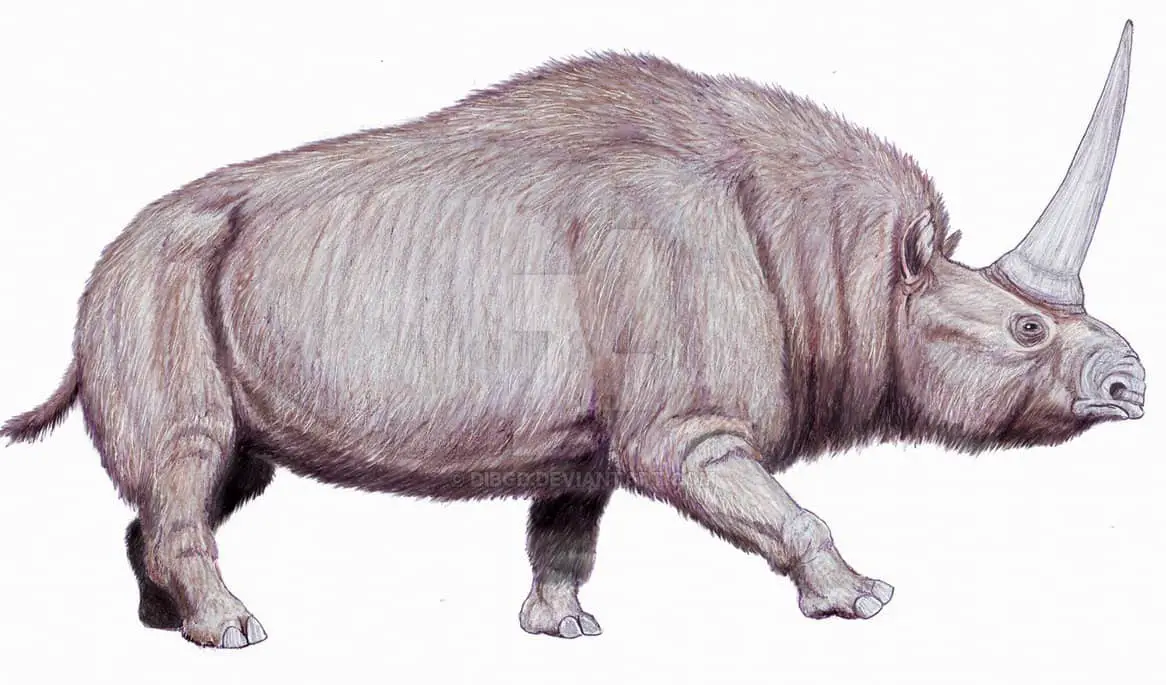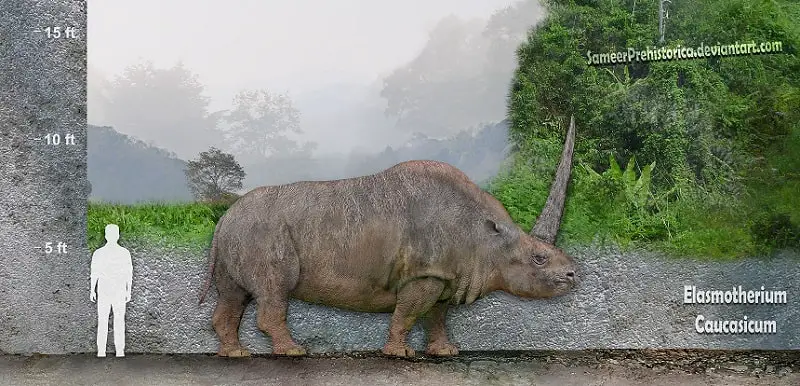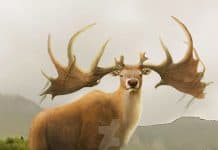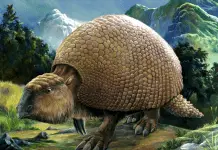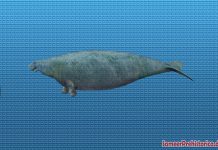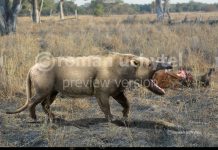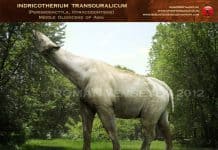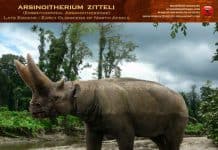Quick Elasmotherium Facts
- Lived from the Pleistocene through the Modern Period
- Lived in Eurasia
- Also known as the Steppe Rhinoceros and the Giant Siberian Unicorn
- May have been the origin of the unicorn myth
- Horn may have been as long as a human male is tall
- Twice as long as a black rhinoceros
- Weighed as much as a hippo
- Was an herbivore
About Elasmotherium
Elasmotherium is a giant rhinoceros which lived approximately 2 million all the way to 10,000 years ago – from the Pleistocene, all the way through the Modern Period. It was first discovered during the early 18th century in Russia and was subsequently described and named by Johann Fischer von Waldheim in 1808. It was given the name Elasmotherium – a name which means “plated beast.”
Different Elasmotherium pictures show this mammal in very different ways. Some pictures show it as a hairless rhinoceros, others show it as being covered in a thick coat of fur. While paleontologists aren’t completely sure at the moment, it is believed that this mammal did have a coat of fur to keep it warm.
One of the most interesting facts about Elasmotherium is this animal is one that has quite a few names. While its official and scientific name is Elasmotherium, it has also been known as the giant rhinoceros, the steppe rhinoceros, and the giant Siberian rhinoceros. It was a mammal that was related to the wooly rhinoceros, also known as Coelodonta.
These animals were approximately 20 feet long and weighed around 4 tons. They walked on all four legs and had a big horn on their nose. This horn was made out of keratin – the same thing that human hair is made out of. Paleontologists believe this horn wasn’t used for protection but was used to attract mates. Even so, scientists believe this horn could grow as long as 5 or 6 feet.
Elasmotherium was an herbivore, so it lived off of the plant material of its time. This animal was probably a grassland feeder – much like an elephant. It probably traveled for long distances so it could take advantage of different grasses. It could have possibly traveled in herds for protection against any predators that may have been around at the time.
This rhino went extinct during the last Ice Age – approximately 10,000 years ago. Which means that it was probably well known to the settlers of Eurasia at that time. It was also probably have been the basis for the unicorn myth that has persisted for thousands of years. Stories of mythical one-horned creatures can be found all through Russian literature and then later, in Indian and Persian literature. These stories were then probably imported into Europe, either by oral tradition or by traveling monks, where they were changed into the unicorn stories we know today.
